Wolt has introduced 20 electric cars with swappable batteries in Prague as part of a new pilot project aimed at testing more sustainable delivery methods.
The vehicles, provided by Romanian EV manufacturer UNY, are part of the international NG SEED program and supported by the European Institute of Innovation and Technology (EIT) Urban Mobility).
The test run in Prague aims to develop scalable, eco-friendly delivery systems. Warsaw and Budapest are also participating in the initiative.
What sets these electric vehicles apart is the instant battery-swapping system. Couriers can replace a depleted battery with a fully charged one in just seconds — eliminating downtime and reducing delays. “I really like this project. Thanks to the size of the electric car, I can park anywhere easily and safely,” said Adam, a Wolt courier in Prague.
Wolt’s goal is to evaluate whether zero-emission, last-mile delivery can be implemented on a larger scale. Unlike traditional systems, couriers pick up orders from a distribution center and deliver them directly to customers, without intermediate stops.
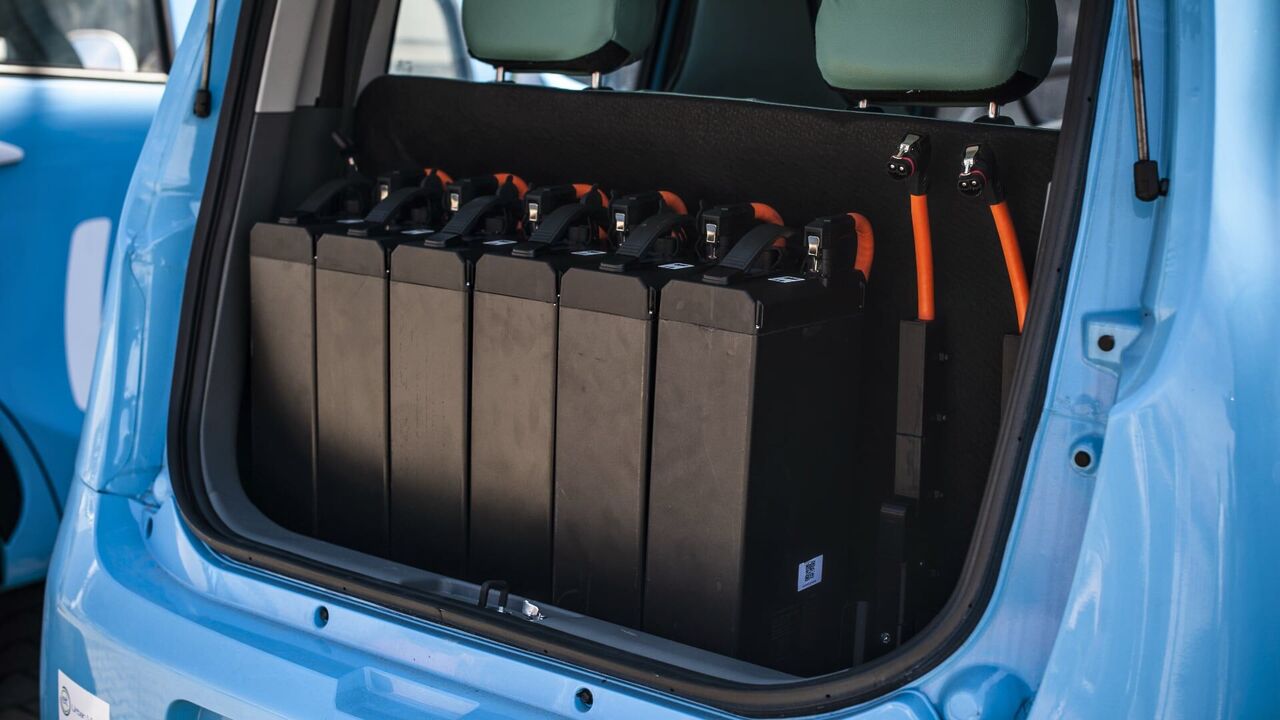
The last-mile delivery market in Europe exceeded $30 billion in 2023 and is projected to reach nearly $55 billion by 2033. However, this booming sector contributes 5–10% of total urban transport emissions — making innovation in this space urgent.
According to Jakub Moťovský, Wolt’s Strategy and Innovation Manager for Central Europe, the pilot has significant potential. “Through our participation in the NG SEED program, we’re testing a system that could cut CO₂ emissions by up to 90% and reduce operating costs by half. Solutions like this can make city life cleaner and more efficient,” he said.
The Prague pilot has set clear targets: complete 70,000 emission-free deliveries, travel 360,000 kilometers, and save 25 tons of carbon dioxide before the project ends.
Would you like us to write about your business? Find out more
With the general election approaching in October, Tomio Okamura’s Freedom and Direct Democracy party (SPD) is once again drawing attention — not with dramatic new proposals, but by quietly strengthening its position on the political map.
Recent polling suggests SPD is holding steady between 13 and 17 percent. That might not be enough to lead the next government, but it’s more than enough to influence who does. And that possibility is making both Prime Minister Petr Fiala and opposition leader Andrej Babiš uneasy.
Fiala’s centre-right Spolu coalition is battling flagging approval ratings. Babiš, despite leading most surveys, isn’t guaranteed a majority. If he falls short, he may have to consider working with Okamura — someone he’s previously dismissed as too radical for mainstream politics.
But Okamura isn’t repeating the same slogans that made headlines in past campaigns. Instead, he’s adjusted his tone. The word “Czexit” has all but vanished from his speeches. In its place: calls for national referenda on EU membership and more direct public say in decisions involving Brussels.
At a recent campaign stop in Ústí nad Labem, he told supporters, “We’re not talking about leaving Europe. We’re talking about returning power to the Czech people.” The message is less confrontational than in previous years — but the underlying ideas haven’t changed much.
Analyst Pavlína Janebová, of the Association for International Affairs, sees a deliberate shift. “He’s softening the language, but the core message is the same,” she said. “It’s smart politics. He knows the word Czexit alarms voters, but the sentiment still appeals to them.”
SPD’s platform focuses on tighter migration controls, constitutional changes to allow Swiss-style referenda, and opt-outs from EU regulations. The party often frames these positions as simple common sense — a phrase repeated in speeches and campaign materials.
While nationalist parties in nearby countries have seen leadership changes or internal divisions, SPD has remained unusually stable. Okamura has kept a tight grip on the movement, avoiding the splintering that’s weakened similar groups in Slovakia or Poland.
What helps him stay relevant is the way SPD weaves together multiple strands of public frustration: worries about rising prices, dissatisfaction with the political establishment, and anxiety over the costs of supporting Ukraine. The message lands strongest in regions outside Prague, where disillusionment with mainstream parties runs deeper.
Meanwhile, Babiš is still recovering from his failed presidential bid last year. Legal troubles continue to follow him, and his relationship with Okamura is complicated. But the arithmetic may leave him little choice — if he wants to return to power, he might have to reach across the aisle.
Would you like us to write about your business? Find out more
Restaurant lunches in Czechia have become more expensive again, continuing a trend that’s hitting consumers across the country.
A new report by Edenred, a firm that specializes in employee benefits, shows that lunch prices have outpaced wage growth significantly over the past decade, leaving many Czechs paying more for less.
According to Edenred’s annual survey, the average lunch menu in Czechia now costs 196 CZK.
But in cities like Prague (220 CZK) and Brno (208 CZK), prices are even higher. In contrast, diners in regions like Zlín and Olomouc pay around 170 CZK, making them the most affordable areas for eating out.
“From 2014 until now, lunch menu prices have risen by 130%, but average wages have only grown by 82%,” said Aneta Martišková, Edenred’s director of external relations.
Rising costs of food and labor are driving the price surge
The increase isn’t just about inflation. Restaurant operators point to sharp rises in ingredient costs—20 to 30 percent more expensive than just a few years ago—and the need to pay staff more competitively in a tight labor market.
“Running a restaurant today is far more expensive than it used to be. Raw materials are pricier, and good staff need proper salaries,” said Michal Koudela, owner of a restaurant in Brno’s Černovice district.
In his restaurant, lunch menus range from 165 CZK to as high as 300 CZK, depending on what’s offered. Meanwhile, in České Budějovice, lunch prices have jumped from around 130 CZK in 2014 to over 205 CZK in May 2025.
As prices rise, restaurants are seeing fewer customers—especially during weekday lunch hours, which were once the busiest time. In response, many businesses are separating soup or drinks from the lunch menu, offering them only as paid extras.
Many restaurant owners fear that if input costs rise again, they’ll have no choice but to increase prices further just to keep their businesses afloat.
Would you like us to write about your business? Find out more
Summer is taking a break across Czechia this week as a series of cold fronts sweep through Central Europe, dragging in cooler, damp air from the northwest.
The cooling began Monday, when a wavy cold front moved eastward across the country. Storms rolled through overnight into the morning hours, bringing rain and noticeably lower temperatures. Daytime highs hovered between 20 and 24°C, though some western parts briefly reached 26°C. Overnight, the mercury dipped to as low as 12°C in the west, with a moderate southwest to west wind persisting throughout the day.
The situation is expected to worsen by Tuesday night into Wednesday, when a secondary cold front and a low-pressure system over eastern Poland deepen. These systems are set to keep skies cloudy to overcast, with persistent and sometimes heavy rainfall, particularly in Moravia and Silesia.
By Wednesday, the west of the country may see partial clearing, with isolated afternoon showers. In contrast, the east will remain cloudy and wet, with ongoing heavy rain possible in northeastern regions. Daytime temperatures will peak between 18 and 22°C, though in rain-affected zones, they may remain around 16°C. Winds from the northwest will pick up, with gusts reaching 15 m/s.
A split weather pattern emerges Thursday. The west will dry out, with partly cloudy skies and only scattered showers. However, the east will stay under thick cloud cover, with frequent rain—some of it still heavy in the northeast. Conditions should start to improve later in the day.
By Friday, the low-pressure system over Poland should begin to lose its influence. Most of Czechia will experience partly cloudy to cloudy conditions, with occasional showers. The northeast may still see light rain, but nothing as intense as earlier in the week. Daytime temperatures will again climb to 21–25°C, while the northeast may stay slightly cooler.
Would you like us to write about your business? Find out more
In an unconventional approach to cleaner streets, Prague 3 has introduced its very own superhero — Exkreman — to remind dog owners of a simple responsibility: pick up after your pet.
Throughout June, residents of Žižkov began noticing stickers on pavements that read, “Exkreman sees you. Whoever doesn’t pick up — let them be ashamed!”
The slogan, paired with a bold “EE” logo, marks the arrival of a new public awareness campaign that’s both playful and pointed.
The brain behind the character is filmmaker František Loukota, while the costume was crafted by artist Olivia Dorůžková. Exkreman, with his unmistakable costume and satirical tone, is designed to promote cleaner public spaces in a way that’s hard to ignore.
“I often observe dog walkers, and I’d say 99% of them carry bags and clean up properly,” says Prague 3 Mayor Michal Vronský. “That certainly wasn’t the case five years ago. It shows that these types of campaigns do have an effect.” Vronský believes the superhero concept will resonate even more with the public. “I’m glad we’re continuing with this initiative in a fresh, original form,” he adds.
The city district has a long track record of blending humor and civic responsibility in its public messaging. Previous campaigns include the pun-driven “Žižkov is not Šiškov” and the quirky “Dog Miss” competition, both aimed at encouraging responsible pet ownership.
This summer, Exkreman will expand his mission beyond sidewalk signs. He’ll make appearances across Prague 3’s official social media platforms and digital channels, particularly during the high-traffic summer months.
The initiative also includes collaboration with Čistá Trojka, the municipal cleaning company, which plans to integrate the superhero into its outreach and operations.
Prague 3 currently maintains 330 dog waste bag dispensers, and in 2023 alone, locals used over 2.5 million bags provided through this system. But while most residents comply, a few still leave unpleasant surprises behind — and that’s where Exkreman steps in.
Would you like us to write about your business? Find out more
Escape the crowds without leaving the city. These three Prague restaurants with gardens offer the peace, greenery, and honest Czech cuisine you’d expect in a quiet village — not the capital.
While Prague boasts hundreds of places to eat, very few offer the rustic charm of a countryside inn. These spots combine great food, outdoor seating, and relaxed atmosphere, making them ideal for summer lunches or long evening dinners under the trees.
1. Na Květnici: Classic Czech Fare Under Chestnut Trees
Behind the Nusle Town Hall, in a former Sokol community building, you’ll find Na Květnici — a well-known local spot with the feel of an old-school Czech pub.
Its spacious garden can seat up to 450 people under the shade of mature chestnut trees, but it still manages to feel calm and personal. Staff serve tank Pilsner and honest Czech meals, including roast meats, dumplings, and grilled dishes prepared outdoors.
Locals come here regularly, but the place also draws people from other parts of Prague, especially in the summer. The restaurant organizes barbecues, concerts, and events for children, and even brews its own beer, Květ, which is light and refreshing. It’s one of the few places in the city where the atmosphere really feels like a village pub.
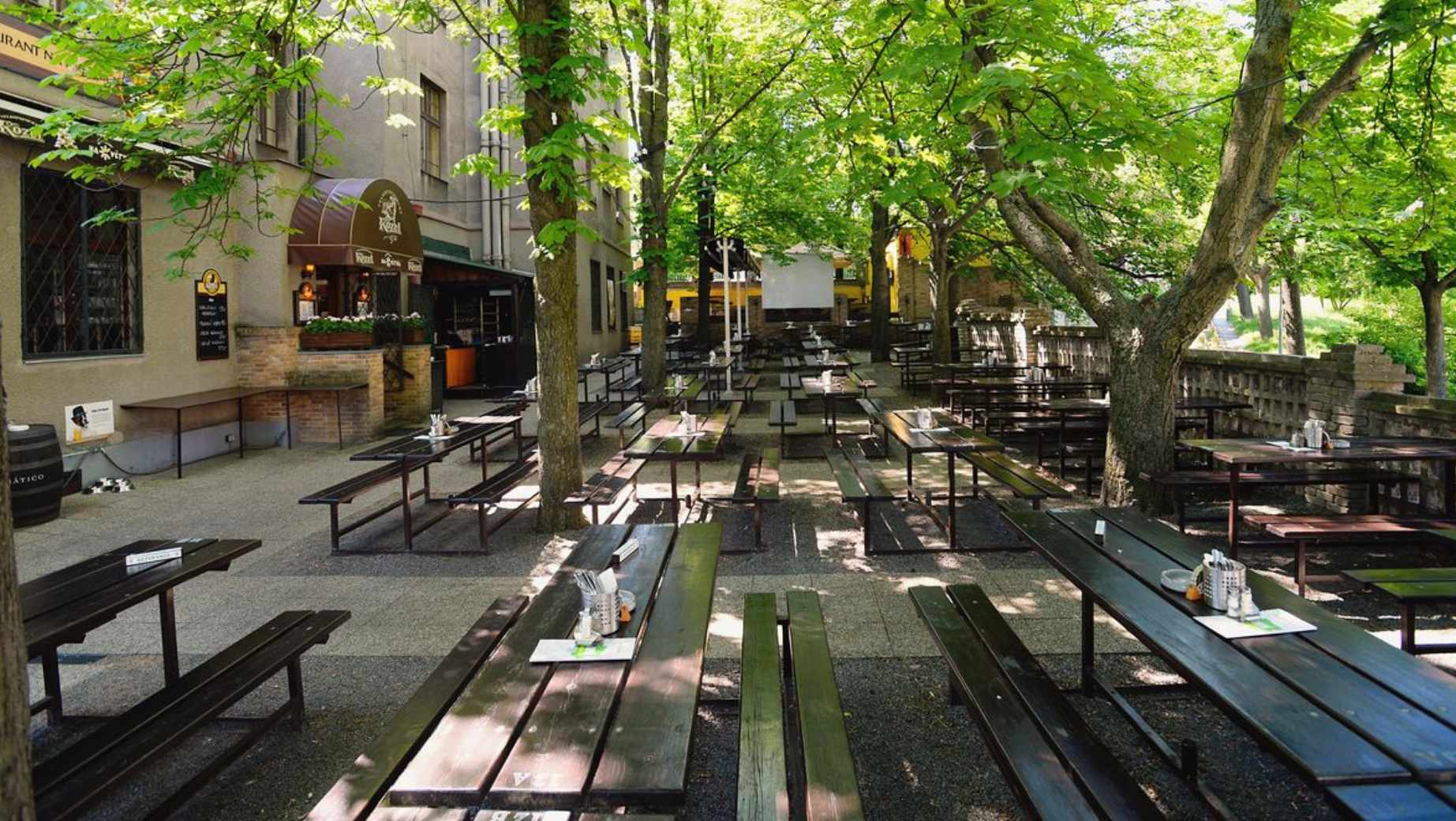
2. U Lípy: Historic Inn with a Retro Soul
Dating back to the 18th century, U Lípy was once a rest stop on the old road to Karlovy Vary. Today, it’s a cozy restaurant offering Czech favorites in a charming, slightly nostalgic setting.
The space includes a large terrace, winter garden, and a children’s corner, making it a great choice for both families and casual diners. The menu features staples like roast duck, beef goulash, and sirloin with creamy sauce, alongside seasonal dishes made from fresh ingredients.
Inside, vaulted ceilings and stone columns offer a glimpse into the building’s past as a wine bar. The retro-style decor adds a touch of character, while the drinks list includes Krušovice beer and wines from Czech and international producers.
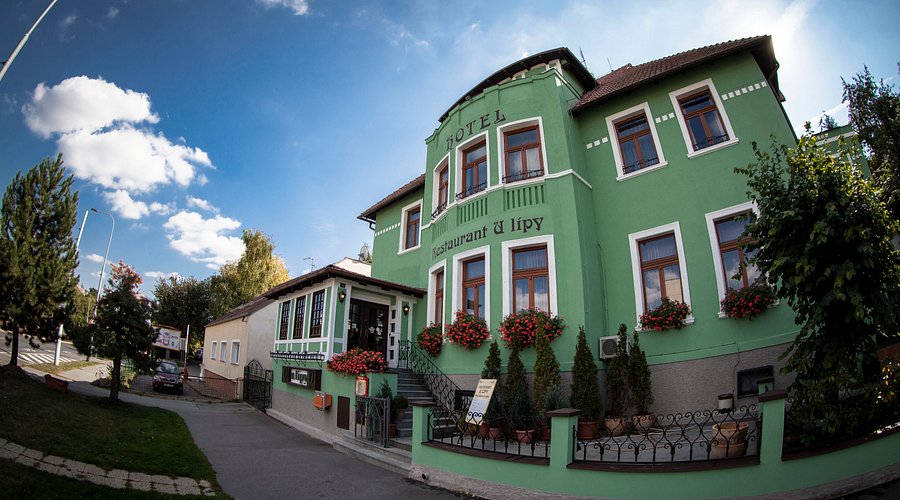
3. U Rytíře: Village Vibes in Prague’s Backyard
At U Rytíře, you’ll find everything you’d expect from a traditional Czech pub — except the crowds and traffic. Located on the outskirts of the city, it serves Czech specialties in a peaceful, open-air garden.
Here, food is the star. You can watch suckling pig, pork knuckle, and juicy steaks being grilled right before your eyes. It’s the kind of place where locals gather for weddings, graduation parties, or summer celebrations.
The atmosphere is laid-back and lively, thanks to live music, excellent wine from the Templar cellars, and helpful staff. It’s easy to forget you’re in Prague at all — the setting feels more like a village festival than a restaurant in the capital.
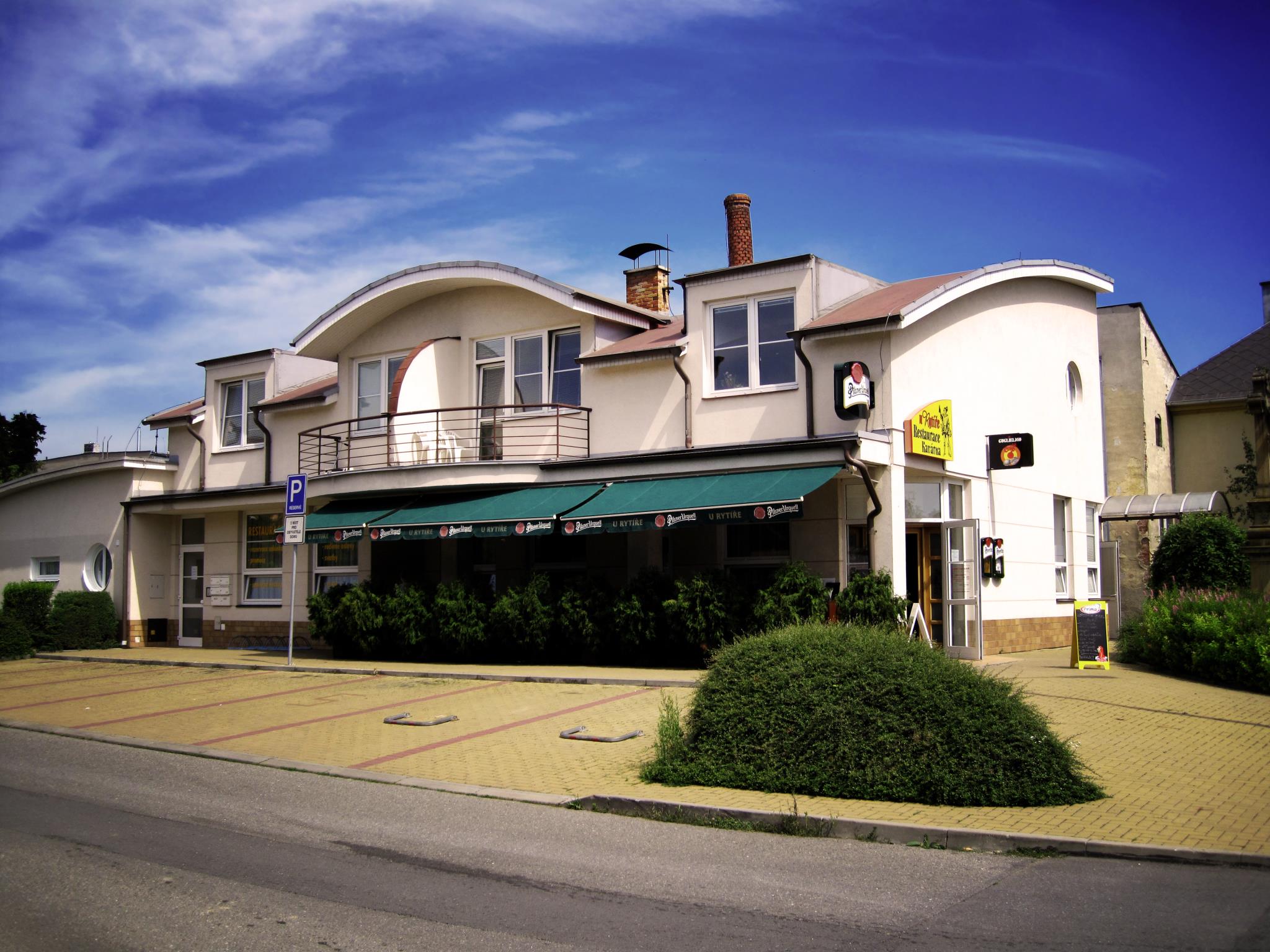
Would you like us to write about your business? Find out more
For the first time ever, Colombia’s Independence Day will be officially celebrated in the Czech Republic.
Organized by ASOCOLCZ and the Embassy of Colombia in Prague, the event will take place on Saturday, July 19, 2025, at Betlémské náměstí 269/1, right in the heart of the city.
The full-day celebration, running from 10:00 a.m. to 8:00 p.m., promises a colourful mix of Colombian music, traditional food, and cultural activities — all infused with the warmth and energy of Latin America.
This marks the first official recognition of July 20, Colombia’s national holiday, on Czech soil. While informal gatherings have taken place in the past, this year’s event is a milestone for the growing Colombian community in Prague and across the country.
Organisers have confirmed several performances and food stalls, with more announcements expected in the coming weeks. The event is free and open to all — locals, expats, and especially anyone who wants to experience the rich flavours and rhythms of Colombia.
“It’s not just a celebration of independence; it’s a celebration of identity and community,” said one of the organisers. “We want to share our culture with everyone in Prague.”
The event is part of the 5th Colombian Week in Prague, and for the first time, it is being organized in partnership with the newly established Embassy of Colombia in the Czech Republic, which officially opened its doors on July 4, 2025.
The festival is co-organized by the Embassy of Colombia, ASOCOLCZ (the Association of Colombians in the Czech Republic), the National Museum, and El Dorado Coffee.
Organizers highlight the importance of this first official collaboration, noting that until now, Colombia had no diplomatic representation in the country.
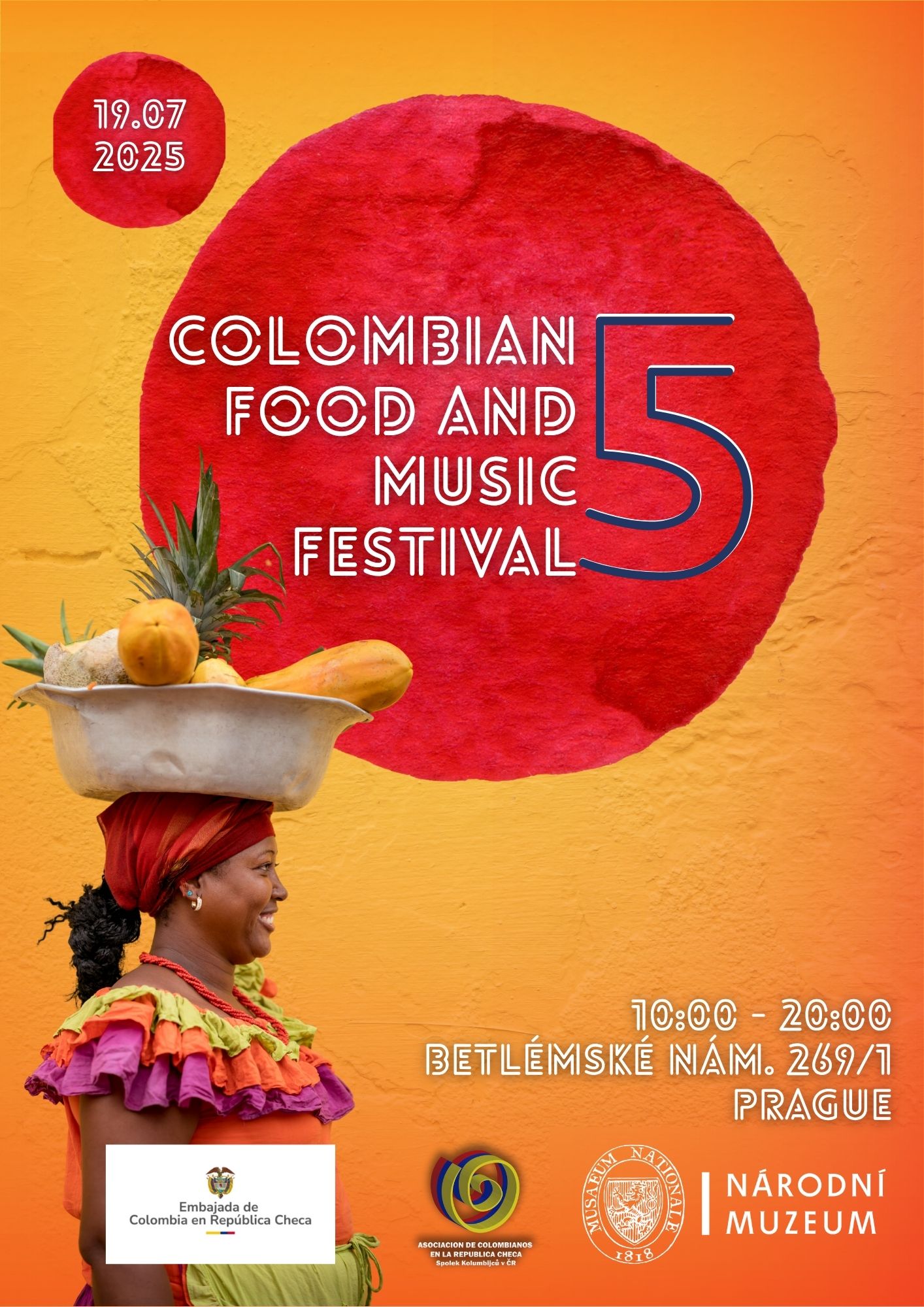
Would you like us to write about your business? Find out more
Power has been fully restored across the Czech Republic following a widespread blackout that disrupted electricity supplies to Prague, parts of eastern Bohemia, and several northern and central regions, including Liberec, Ústí nad Labem, and the Central Bohemian Region.
According to ČEPS, the national transmission system operator, all substations are now operational, and electricity distribution is gradually stabilizing across the affected areas. The outage struck around midday on Friday, causing extensive disruptions in both residential and public infrastructure.
In Prague, large areas went dark, with two-thirds of the city temporarily without electricity. “The outage primarily hit the right bank of the Vltava River,” said Jan Bílek, spokesperson for Pražská energetika (PRE), in a statement to Czech Television.
Substations in Malešice and Chodov were among those knocked offline. For a brief period, Řeporyje was the only operational substation serving the capital. By around 2:15 p.m., ČEPS confirmed that all Prague-area substations were back online.
PRE’s Petr Holubec reported that by 2:30 p.m., most districts in Prague had their power restored. He acknowledged that some outer areas, including Letňany and Černý Most, might have experienced delays, but were also expected to be reconnected shortly.
However, as of 2:50 p.m., households in Vršovice and Strašnice were still experiencing outages.
In the Liberec region, electricity restoration took longer, with parts of the Česká Lípa district still without power even after 3 p.m. ČEPS has yet to provide a definitive explanation for the system failure but indicated that a transmission network disruption was the root cause, triggering a chain reaction that knocked out most substations.
Energy specialists say it will take additional time to analyze the incident fully. In the meantime, ČEPS crews and regional distributors remain on high alert to monitor the grid and prevent any further instability.
Would you like us to write about your business? Find out more
A widespread power outage brought large parts of Prague to a standstill on Friday morning, leaving residents without electricity, halting metro service.
Prague Energy (PRE) confirmed the outage was caused by a failure at the ČEPS substation in Chodov.
Firefighters responded to a high number of people trapped in elevators, particularly in residential buildings. Energy analysts reported a sudden 30% drop in grid load.
According to Miroslav Řezáč, spokesperson for the Prague Fire Department, emergency units were dispatched to Chodov, Horní Měcholupy, Střížkov, Žižkov, and Vysočany. Blackouts were also reported in Letňany and several nearby areas.
The city’s public transport system was severely disrupted. Metro lines A, B, and C were all out of service for several hours. Multiple tram lines and trolleybuses were also affected, causing widespread delays and forcing commuters to seek alternative transport.
Residents also reported problems with non-functioning ATMs and other digital services reliant on the electricity grid.
The outage is one of the most serious to hit the Czech electricity grid in recent memory.
“We are currently investigating the extent of the outage and the complications it has caused,” Czech Interior Minister Vít Rakušan posted on X.
Live updates:
- Traffic lights at key intersections — including I. P. Pavlova, Kbelská Street, and near the Dancing House — have already been restored. However, after power is restored, some lights switch to failure mode, requiring technician intervention. Crews are gradually inspecting and repairing each one to ensure full functionality.
- “After agreement with the prime minister, I activated the Central Crisis Staff. At this moment, we are waiting for updated information from ČEPS,” said the Minister of Interior. He stressed that people should still avoid elevators. “We are not over the problem yet. People should be patient,” he added.
-
Mobile operators note that the power outage may impact some customers. Key infrastructure is currently being supported by backup power sources.
- Firefighters evacuated three trains on the Prague – Kolín section. There are problems with power supply on the Most – Prague section. Supplies have been restored in Kolín.
- All metro lines are in operation, but tram lines on the right bank of the Vltava are closed, except for the functional Národní třída – Dvorce line.
- Mobile and internet banking were not affected by the power outage. Some ATMs are not working,
- Train services between Prague and nearby towns like Kolín and Benešov were also suspended.
-
Police officers from the National Center for Combating Terrorism, Extremism, and Cybercrime (NCTEKK) currently have no evidence that today’s extensive power outage in the Czech Republic was caused by a cyber or terrorist attack.
-
Liberec, Mladá Boleslav, Most and Litvínov, Ústí nad Labem and partly also Hradec Králové remain without electricity supply. Transport companies in the affected cities are reacting according to crisis plans
-
Railway Administration Firefighters: Electricity supply is gradually being restored.
-
DPP: On the left bank of the Vltava, all sections of tram lines are in operation, on the right bank of the Vltava, only the section Národní třída – Lazarská – Karlovo náměstí – Dvorce is in operation.
- DPP: From 12:35 pm, metro line B operation has been restored. Line A passes through the Želivského station.
Klára Kolouchová, the first Czech woman to reach the summits of Mount Everest, K2, and Kangchenjunga, has died during an expedition on Nanga Parbat, Pakistan’s ninth-highest mountain. She was 46.
Initial reports from local media in Pakistan offered conflicting explanations. Some early accounts suggested an oxygen tank explosion, while a more recent article in The Pamir Times stated that Kolouchová fell between Camp 1 and Camp 2 at around 4 a.m. on Thursday.
“Her teammates later confirmed her death after returning to Base Camp, though her body remains at the site of the fall,” said Nizamuddin, Additional Deputy Commissioner of the Diamir district, in a statement to The Pamir Times.
Kolouchová was accompanied on the expedition by her husband and five other climbers. They arrived at Nanga Parbat’s Base Camp on June 17. It remains unclear whether they were operating as an independent team or as part of a larger group.
Climbers on Nanga Parbat this season have described challenging conditions, including unusually high temperatures, bare ice, and frequent rockfalls. The snowline begins only after Camp 3, forcing climbers to navigate steep rock faces and ice sections using the front points of their crampons.
The Pakistan Alpine Club has confirmed her death. An army helicopter is expected to fly to the mountain on Friday to assist in locating and recovering her body.
In addition to Everest, K2, and Kangchenjunga, Kolouchová had also summited Cho Oyu and, earlier this year, Annapurna — all part of the world’s 14 mountains over 8,000 metres.
This past spring, she attempted Dhaulagiri, another peak in that elite group.
Would you like us to write about your business? Find out more
Emirates has reached a major milestone in Czech aviation, celebrating 15 years of operating direct flights between Prague and Dubai.
Since its inaugural flight on July 1, 2010, the airline has transported over 3 million passengers across more than 8,000 flights, solidifying its role as a key player in connecting Czechia with the Middle East and beyond.
The route is currently operated daily by the Airbus A380, the world’s largest passenger aircraft and the only one of its kind in regular service at Václav Havel Airport.
With 615 seats – including 58 fully flat Business Class seats and an on-board lounge bar – the aircraft brings over 3,500 seats per week to the route, reflecting growing demand for travel between the Czech Republic and the United Arab Emirates.
Economic, tourism and business ties between the two countries have also expanded. Emirates employs 116 Czech cabin crew members, 9 pilots, and 259 ground staff across departments – all trained in state-of-the-art facilities in Dubai. Their training includes advanced simulators and development programs, contributing to high standards across the board.
We’re celebrating 15 years of @emirates flying between Prague and Dubai.
We appreciate this amazing partnership that connects millions to the world. As a special gift, the iconic Airbus A380 in a unique livery landed in Prague today.
pic.twitter.com/DJq2FtAr3s
— Prague Airport (@PragueAirport) July 1, 2025
Dubai isn’t just a destination – it’s a key transfer point for Czech and international travelers heading to Asia and the Pacific. Popular onward destinations include Japan, the Maldives, Singapore, Sri Lanka, Seychelles, and Australia.
At the same time, the route is bringing more international tourists to Czechia. According to CzechTourism, arrivals from the United Arab Emirates increased by 53% in early 2024, reaching nearly 25,000 visitors and over 69,000 overnight stays.
“This connection enhances not only UAE-Czech ties but access to broader markets across Asia, Australia and Africa,” said Jaroslav Filip, Director of Airline Business at Prague Airport. “We value our long-standing cooperation with Emirates.”
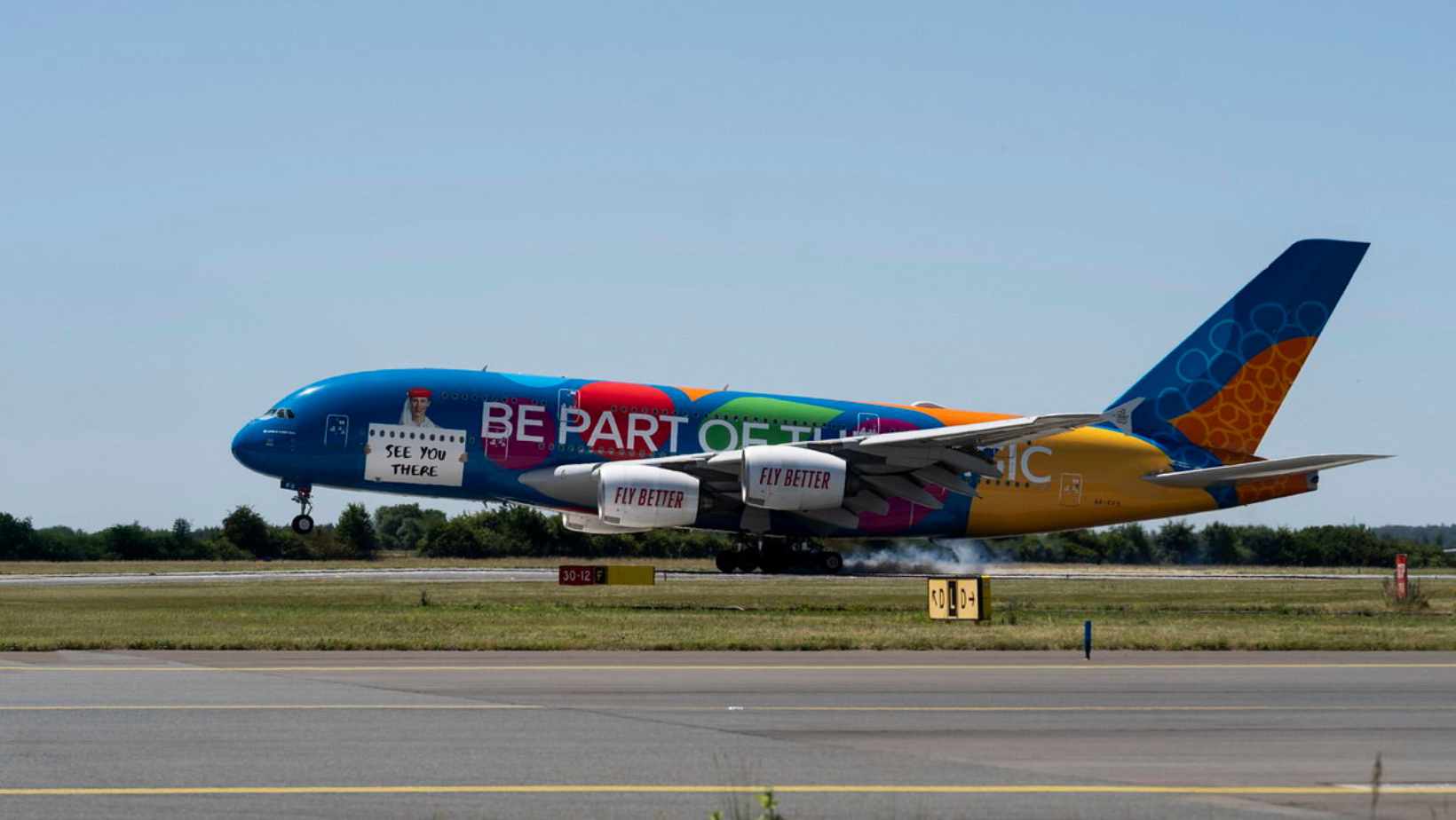
Flying in Style: What Passengers Experience
The on-board experience aboard the A380 is one of Emirates’ trademarks. Passengers enjoy spacious seating and the ICE entertainment system offering over 6,500 channels.
Business Class travelers also get access to the exclusive onboard lounge, where premium wines, cocktails, and snacks are served at 12,000 meters above sea level.
Would you like us to write about your business? Find out more
Czech lawmakers are backing a plan to increase the nightly accommodation tax for short-term visitors to align Czech tourist destinations with other European cities.
A group of MPs has introduced an amendment to the tourism business law that would allow municipalities to raise the maximum nightly fee from 50 to 100 Czech crowns per person. The measure, if passed, would affect stays of up to 60 days and leave the final decision on pricing to local governments.
One of the amendment’s backers, Michal Zuna of the TOP 09 party, argued that the increase brings the Czech Republic more in line with its European peers. “It’s a 100 percent increase, from 50 to 100 crowns. Four euros — that’s a mid-range amount in the European context,” he explained.
The proposal has broad cross-party support and is signed by MPs from several parties, including STAN, ODS, and TOP 09. They argue that the current cap, set in 2021, is outdated and fails to reflect the financial demands posed by modern tourism, especially in areas dominated by short-term rental platforms like Airbnb and Booking.com.
Supporters of the hike say municipalities are struggling to fund infrastructure and public services in the face of mass tourism, especially from visitors using platforms that are harder to regulate.
“Cities like Vienna, Paris, and Amsterdam charge far higher tourism fees than we do, yet their tourism sectors remain vibrant and competitive,” the proposal states. “This shows that higher fees don’t deter visitors, especially when the money is used to improve local services and the quality of the tourist experience.”
Tourism businesses and local officials in smaller cities have voiced concerns that abrupt price increases could backfire. Recently, the city council in Jihlava opted for a more modest rise, increasing its own accommodation tax to 25 crowns per night. In Prague 1, however, the most sought-after tourist area in the capital, district mayor Terezie Radoměřská wants to hike the tax fourfold to 200 crowns per night.
Last year, Prague collected nearly 900 million crowns (€36.5 million) in tourist fees, which were directed toward public maintenance, transport, and infrastructure repairs.
According to Prague’s mayor, Bohuslav Svoboda (ODS), raising the fee could generate over 3 billion crowns (€121.5 million) annually. “Generally speaking, the revenue is reinvested in tourism, as well as transportation and roads,” he said, describing the increase as necessary to cope with rising infrastructure and maintenance costs.

